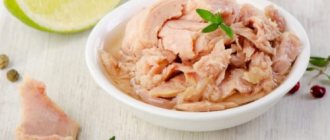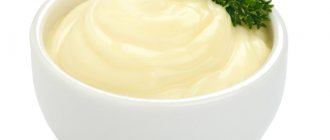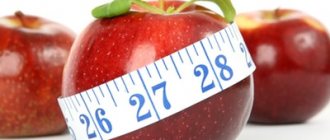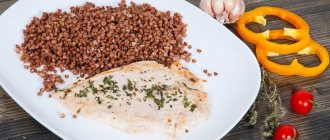- The effect of salt on the human body
- When is a salt-free diet prescribed?
- How to reduce the amount of salt in your diet?
- How to replace salt?
- Sodium-free salt
| “Salt is white poison!” - says a quote from a famous Soviet film. And although this is some kind of hyperbole, excessive salt consumption (and some people like it) will not be beneficial. Moreover, with some disorders of kidney function and metabolic processes, the amount of salt in the diet must be strictly controlled. |
Doctors also recommend that older people reduce their consumption. What effect does salt have on our health? When and with what can and should it be replaced?
How to replace salt in food
Trying to find the answer to the question of what can replace salt in a diet, many do not even imagine that there are products that can become a complete replacement for salt.
They are worth taking a close look at if you decide to seriously change your diet. Even if you are forced to give up salt for medical reasons or are concerned about the health of your family, using these products and seasonings, you do not feel disadvantaged.
So, how to replace salt in food so as not to deprive yourself of gastronomic pleasure?
What kind of salt can you use in your diet?
As strange as it sounds, you can replace table salt with salt. Natural seasoning is not produced chemically, but is extracted from sea water (precipitated), is not bleached, and is not crushed to a powder state. After such processing, its beneficial properties disappear. Conventional seasoning does not contain the required amount of iodine, magnesium, calcium and potassium, but there is an excess of sodium. You can use salt in your diet, the main thing is to pay attention to its quality and production method, because its effect on the body depends on this.
Marine
Occasionally, powdered salt is found on store shelves. This means that it has already been refined and bleached. The buyer should immediately think about it, because after grinding the salt loses its positive properties. Ideally, the sea fish is large, light gray in color. The process of making such a seasoning involves drying it in the sun. Sea salt during a salt-free diet has a healing effect on the body if used in moderation. The basic rule is to salt food after cooking so that the seasoning is not subjected to heat treatment.
Cardiosol
If you add fucus, red fermented rice, and magnesium to organic sea salt, it begins to have healing properties. Thanks to its therapeutic effects, 5-star cardiosol is becoming popular on the seasoning market; it helps with the functioning of the heart and vascular system. The use of cardiosol is recommended after 45 years of age; it acts as a prophylactic against stroke or myocardial infarction. The seasoning is used exclusively after cooking, otherwise there will be no benefit from it.
Himalayan
Himalayan black salt is produced according to a special recipe, by roasting with rye bread and other additives. This seasoning has a rich composition and has a pronounced egg flavor. Regular use of this seasoning helps solve digestive problems and adds energy to the body. Himalayan pink salt (halite) is made from being dried in the sun for several thousand years. The red color indicates that it contains iron and other components. Thanks to its special composition, it is completely absorbed by the body.
Sea kale
It is used both fresh and dried. Sea kale has a natural salty taste, being a source of iodine, vitamins and microelements so necessary for our body. Dried seaweed can be ground in a coffee grinder and sprinkled on cooked dishes. For variety, dry seaweed can be soaked in water for several hours, and then added to salads and other dishes.
Why salt prevents you from losing weight
Salt retains moisture in the body. The more moisture, the more weight. That is, when losing weight, it is important not only to get rid of fat deposits, but also to disperse the maximum amount of fluid.
In fact, when losing weight, it is water that leaves the body first. Only after the liquid has gone will the fat begin to go away.
Eliminating salt from the body is a challenge for many people, because we are used to salting everything that does not fall into the sweet category, but over time it is quite possible to get used to doing without this spice.
Garlic
This product reduces the body's need for salt, supplying it with all the necessary nutrients. Garlic strengthens the immune system, rejuvenates the body and is a powerful preventative against tumors. It has a very strong taste and strong smell, so you should use moderation, especially if you are going to communicate with people. Dried garlic and garlic powder have a milder taste, and if you still go too far with this seasoning, chew a sprig of parsley or drink a glass of milk to soften the smell.
Soy sauce
It already contains salt, so add it to dishes in small quantities. Natural and properly prepared soy sauce is rich in beneficial amino acids, minerals and vitamins; it slows down the aging of the body, being considered more effective than red wine. Buy high-quality soy sauce, which contains only soybeans and wheat - it should not contain any preservatives. If you want to replace salt with soy sauce, keep in mind that the recommended daily dose is no more than 2 tbsp. l.
Salt-free diet
In order for weight loss to take place without harm to health, it is necessary to include in your daily menu foods that contain all the vitamins, minerals, proteins, fats, and other substances necessary for the body.
The diet will be effective and useful only if you follow all the recommendations. You should drink at least 1.5 liters of water daily. Physical activity should be present, but in moderation. You should not overwork your body.
The essence
When on a diet, you should reduce your salt intake as much as possible.
This diet involves the complete exclusion of sodium chloride from the diet. The required percentage of this substance should be ingested only with products that contain natural salt.
To achieve the desired results, meals should be divided (5-6 times a day), and portions should be small. It is recommended to steam, stew, bake or boil food.
Most diets are designed to last a few days or weeks, but to improve your health, you should minimize your salt intake (or completely eliminate it) even after completing your weight loss program, provided that you replenish sodium chloride in your body with other foods.
Contraindications
If you do not disturb the mineral balance in the body, i.e. If you adhere to the recommended menu, the salt-free diet has a small list of contraindications.
It is not recommended to radically change your diet to lose weight:
- during exacerbation of chronic diseases;
- during the period of bearing a child;
- for hypertension;
- during a viral or bacterial infection;
- for severe pathologies of internal organs.
You should not go on a diet without a preliminary medical examination and consultation with a doctor.
Efficiency
With a salt-free diet, fluid is removed from the body, so it should be borne in mind that a large percentage of weight loss is not achieved by reducing the fat layer. In the first 7–10 days, the reduction in kilograms will be rapid, and then the weight loss process will slow down. This process is explained by the fact that fluid will be removed from the body within a week.
Further weight loss occurs due to the normalization of organ function, improvement of metabolic processes, removal of toxins, reduction in the number of calories consumed, etc.
According to reviews, a salt-free diet lasting 14–20 days helps to get rid of 5–7 kg.
Consequences
A diet that excludes salt from the diet can lead to an imbalance in the water balance in the body. It will compensate for the deficiency due to the salts that are found in bone tissue. The result of such processes will be an increase in skeletal fragility. But such violations occur only if the diet is chosen incorrectly, i.e. when there is not enough natural sodium chloride in foods.
Dried vegetables
Tomatoes, sweet bell peppers and celery root have a salty tint and are an excellent analogue of salt in salads, first and second courses. When dried, vegetables retain their taste and aroma, and in terms of vitamin concentration they are superior to fresh vegetables. The most important thing is that dried vegetables are an environmentally friendly product, prepared without chemical additives or preservatives. They make the taste of dishes bright, rich and piquant.
Herbs
Wean yourself off salt by seasoning your foods with herbs (fresh or dried) with bright, rich flavors. Try and choose. There are many suitable spices:
- tarragon - slightly spicy, slightly spicy and piquant;
- coriander (cilantro) - has a pleasant aroma of anise and citrus;
- marjoram - hot, spicy and fiery;
- cumin - sweet-spicy, tart and aromatic;
- cumin (jeera) - pungent, hot, with a nutty flavor.
You can use any other seasonings that you find in the market or store.
Green and onions
Due to its pungent smell and taste, onions can be used instead of salt. By the way, the pungent aroma of onions is a consequence of the high concentration of sulfur, which cleanses and disinfects the blood. To reduce the harshness, the onion can be doused with boiling water or marinated for several hours.
Horseradish and ginger
The hot roots of ginger and horseradish can replace not only salt, but also hot spices. They can be added to dishes fresh or dried, as well as in various sauces and seasonings. Horseradish is rich in vitamin C and minerals, it is a natural antibiotic and protects the body from viral infections. Ginger tones the body, gives vitality, improves memory and increases performance.
The effect of salt on the human body
Table salt is a natural mineral substance. And if now it is fashionable to refuse salt and sugar in the pursuit of a healthy lifestyle, then many centuries ago salt was almost a currency. Today, the most expensive type of salt is considered to be high-quality vacuum salt (several times more expensive than evaporated and rock salt). The cheapest type of salt is salt solutions, which are commonly used in industry, as is the low-quality salt used, for example, to de-ice roads.
Technologies for obtaining salt include its evaporation from water (including sea water) and extraction from the bowels of the earth. According to geologists, the world's salt reserves are practically inexhaustible.
Salt (or sodium chloride) was and remains an element that ensures the vital activity of humans and animals, as well as a product with a wide range of industrial applications. Crystalline sodium chloride is 40% sodium and 40% chlorine. The crystal dissolves well in water of any temperature.
Sodium chloride provides many vital functions of the human body. First of all, it is an integral participant in acid-base processes and water-salt metabolism. Sodium is found in bile, blood, cerebrospinal fluid, pancreatic juice, and human milk. This is one of the main cations necessary for vital body functions:
- ensures the movement of amino acids and glucose through cell membranes;
- ensures the normal functioning of nerve endings and the transmission of nerve impulses;
- well-balanced nerve impulses underlie healthy muscle activity, including the heart muscles,
- promotes the absorption of a number of nutrients by the small intestine and kidneys.
In our body, about 50% of all sodium is found in extracellular fluid, 40% in bones and cartilage, and about 10% in cells.
Chlorine is also an integral part of our metabolism. In particular he:
- participates in the formation of special substances that promote the breakdown of fats;
- participates in the formation of hydrochloric acid, which is a basic component of gastric juice; promotes the removal of urea from the body,
- stimulates the functioning of the reproductive system and central nervous system,
- ensures the formation and growth of bone tissue.
Human muscle tissue contains 0.20-0.52% chlorine, bone tissue - 0.09%; The bulk of this microelement is found in the blood and extracellular fluid.
But in the middle of the twentieth century, salt was declared “white death” and such a loud statement is not unfounded. Clinical studies have shown that sodium chloride (aka table salt), after years of regular and often excessive consumption, leads to hypertension, coronary heart disease, kidney failure and obesity.
This begs the question - what is “excessive” and what is “normal”?
The daily human need for salt in temperate climate zones is 10-15 grams per day. The diet of residents of hot countries may contain more salt, since more sweat is produced, there is a need for more fluid intake, and the body still strives to maintain water-salt balance. In cold climates, water-salt metabolism is not so intense, and salt consumption is less there.
The need for salt also increases with physical activity. Again due to greater sweating and quenching of thirst. In light of these circumstances, athletes are recommended not so much boiled or distilled water as mineral water. Mineral waters already contain sodium chloride and other trace elements.
Like drinking water, you can also choose different salts for adding salt to food. For example, sea or iodized. The advantage of sea salt is that it contains not only sodium chloride, but also potassium chloride, magnesium chloride, magnesium carbonate, calcium sulfate, as well as iron, boron, iodine, phosphorus, and silicon. Iodized salt will additionally enrich the body with potassium iodate. Fluorinated and iodized-fluorinated salts are also used for cooking. There is also salt with reduced sodium content. In it, sodium chloride is partially replaced by potassium chloride. It is especially appropriate in the so-called salt-free diet .
If there is a significant loss of sodium chloride by the body (uncontrollable vomiting, prolonged diarrhea), the amount of salt consumed is greatly increased, and in some cases it is even necessary to administer a salt solution intravenously.
Pregnant and breastfeeding women require more sodium. During this period, blood volume increases, especially during multiple pregnancies. This means that the volume of circulated water and water retained by cells increases. Pregnant women need fluid to increase blood circulation and for the rapidly growing cells of the child, to create that reserve that will one way or another be used up during labor. During pregnancy, many people face the problem of swelling when fluid accumulates. But taking diuretics does not solve the problem. Instead, it is better to increase your salt intake - this explains the craving of pregnant women for pickles.
Vinegar
For salad dressings, it is better to use natural apple or balsamic vinegar. White or red wine vinegar flavored with aromatic herbs is very good for this purpose. Sherry vinegar with the addition of chicory greens goes well with meat, and rice vinegar is very popular in Chinese cuisine.
Spices and herbs that replace salt
Cilantro, dill, tarragon, oregano, parsley, thyme, sage and basil are very tasty and healthy - fragrant herbs contain many vitamins, increase vitality and improve digestion. Cumin, cumin, rosemary and celery seeds, which have a slightly bitter taste, are excellent substitutes for salt and are used in the preparation of meat, soups and marinades. Smoked paprika, curry and allspice give dishes a spicy aroma and tangy taste, while coriander has a fresh lemony smell.
Recipes for weight loss without salt
The diet menu includes many delicious and healthy dishes that can be prepared completely without salt. Depending on the chosen nutrition system, you can lose 5-10 kilograms per month. There are many options for salt-free dishes, so you can choose the appropriate dietary menu option yourself.
Red fish in foil
Red fish contains a large amount of organic substances and amino acids. Omega-3 fatty acids help not only normalize metabolism, but also restore the functioning of the digestive system. When losing weight without salt, it is recommended to include in the menu all types of red fish, steamed or oven-cooked.
Be sure to read: How to lose weight by 20 kg in 3 months in a comfortable mode?
Ingredients:
- Salmon, pink salmon or chum salmon fillet - 400 g;
- Lemon or natural juice - 100 g;
- Dried herbs - to taste.
Cooking method:
- Cut the fish into portions.
- Squeeze the juice from the lemon and drizzle over both sides of the fillets.
- It is recommended to use dried herbs instead of salt. Sprinkle them over the fish, place them on a sheet of foil and wrap them up.
- Bake in the oven for 20 minutes at +180°C until done.
This recipe can be used to cook any fish.
Cold vegetable soup
A wonderful snack for the summer menu and for weight loss is prepared from seasonal vegetables and low-fat kefir. Fresh parsley, green onions and garlic will help replace salt in this soup.
Required Products:
- Radishes (cucumbers) - 200 g;
- Tomato - 200 g;
- Spices and herbs - to taste;
- Kefir - 1/2 liter.
Cooking method:
- Wash the vegetables and cut into small cubes.
- Pour kefir (low-fat) over the products and add herbs and seasonings.
- Let the soup brew for 10 minutes and serve.
For taste, you can add 1-2 slices of fresh lemon.
Vegetable sauté
A tasty and healthy dish suitable for weight loss at any time of the year. If desired, it can be cooked in a saucepan or baked in a ceramic pot in the oven.
Products:
- Zucchini - 1 pc.
- Eggplant - 1 pc.
- Sweet pepper - 3 pcs.
- Tomatoes - 3 pcs.
- Onion - 1 pc.
- Parsley, celery, garlic - to taste.
How to cook:
- Wash all vegetables well and cut into small slices (cubes or bars).
- Place the vegetables in a saucepan, add a little water and simmer, covered, until tender, 20-25 minutes.
- When the vegetables are soft, chop the garlic and herbs into small pieces, add to the pan and stir. To enhance the taste, you can add a little citric acid or a table bite.
Preparing “salty” sauces and seasonings
If you mix any vegetable oil with grated onion, garlic, finely chopped herbs and lemon juice, you get a very piquant salad dressing. Instead of onions and garlic, you can add a little mustard powder or ground mustard seeds to the mixture. A very tasty seasoning made from ground seaweed mixed with fried flaxseeds, garlic and herbs. Paprika added to the seasoning will give it a piquant note, and lemon or lime zest will replace lemon juice.
For fish and chicken, a sauce is prepared from mustard and honey - the spicy-sweet taste makes the dish very harmonious. An unusual salad dressing is made from lemon or orange juice with garlic and onions, and the addition of ground nuts to the “salt substitutes” makes the dishes more palatable, appetizing and satisfying. If you always have homemade mayonnaise made from vegetable oil, lemon juice, mustard and pepper in your refrigerator, then none of your household will even remember about salt. For meat and poultry, sour cream mixed with lemon juice and vegetable oil is suitable - if you add garlic, horseradish and ground coriander to the sauce, the meat will turn out quite spicy and tasty.
Many people are so accustomed to salt that they cannot imagine their life without this seasoning. However, after trying the recommended spices and products as a salt substitute, you will change your mind. And, quite possibly, you will salt your food less, but remember that it is not recommended to use hot seasonings and strong spices in children's cuisine. Experiment in moderation!
Types of salt
There are 3 main types of salt:
- cookery;
- marine;
- Himalayan
All other types of spices, for example, iodized salt, differ from each other in the method of purification and the addition of additional components.
Cooked
It is mined in mines and quarries. During its purification from impurities, a large loss of microelements beneficial to the body occurs.
Slows down the process of removing fluid from the body. For this reason, it is not recommended for use during weight loss.
Marine
The product is obtained by evaporating sea water. Sea salt contains many microelements beneficial to the body.
Salt colors
Himalayan
Salt is extracted from the deposit without the use of explosive chemicals. For this reason, the product is considered environmentally friendly and healthy.
The spice can be pink, red-orange and black. The first 2 types differ in the concentration of iron oxide and polyhalite. Black salt is mined from volcanic rocks. It has this color only in pressed briquettes. If you grind it, it will be pink.











